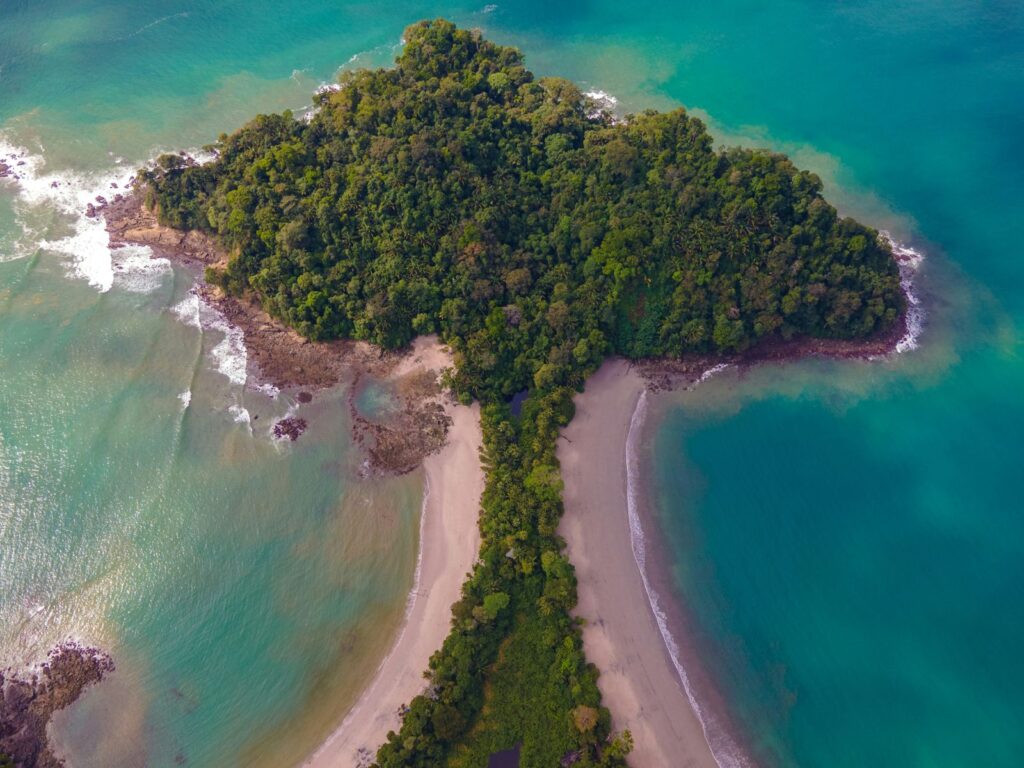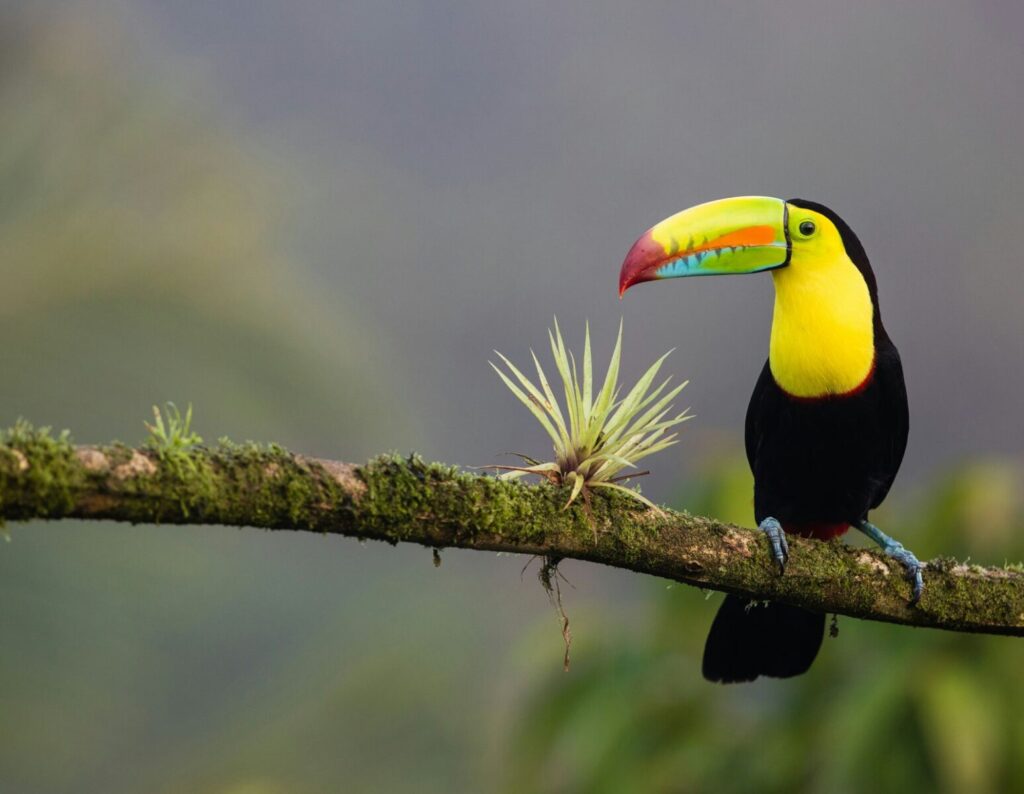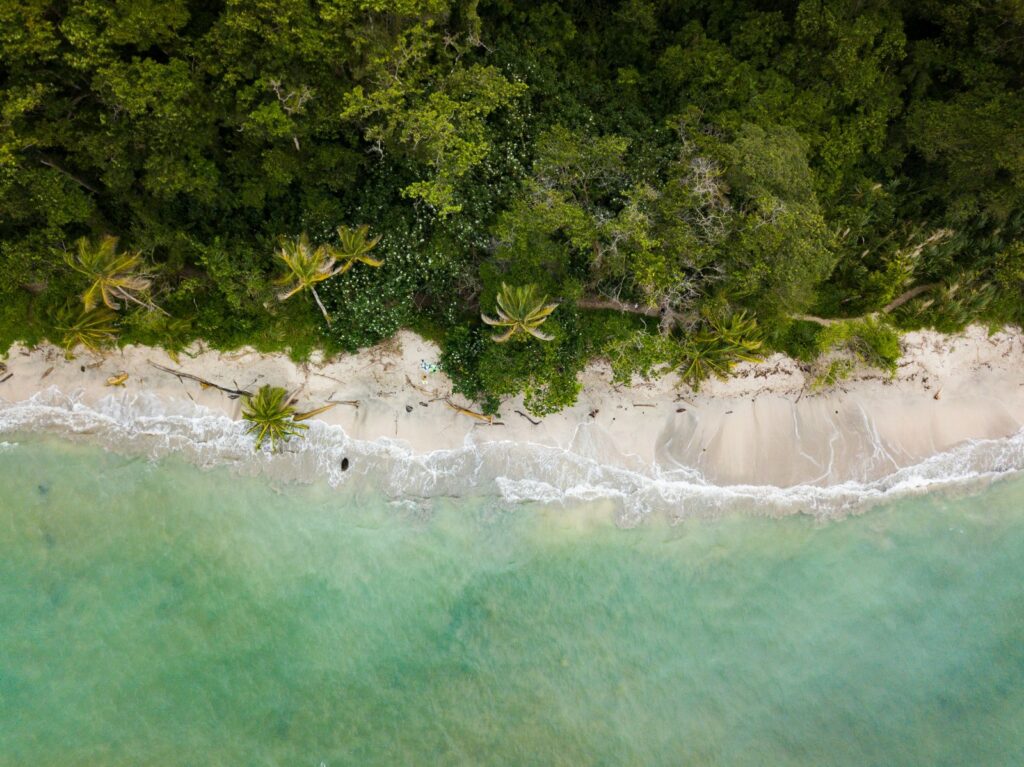Following the first part of Costa Rica’s must-sees that you can’t miss if you choose it as your destination to live your volunteer experience, today we leave you with more recommendations.
The truth is, Costa Rica is a country full of activities to do, landscapes to visit and places to discover. So you won’t have time to get bored.
AND THAT’S THE MAGIC OF TRAVELING!

– RINCÓN DE LA VIEJA
Rincón de la Vieja, a national park that’s one of those places where it feels like the Earth is breathing, a space with a volcano, surrounded by jungle, hot springs, rivers and lots of adventure.
Located in Guanacaste, in the northwest of Costa Rica, near Liberia, about 25 kilometers from the center.
It’s a special place as it is centered on the Rincón de la Vieja Volcano, an active volcano with 9 craters. The park is also divided into two main sectors: Las Pailas and Santa María, a perfect place for hiking with volcanic activity, observing waterfalls and enjoying wildlife.
The main attractions are:
In the Las Pailas Sector (which is the most visited and accessible), you can walk along its 3-kilometer circular trail and see fumaroles (cracks with volcanic gases and vapors), boiling mud pools, and mini geysers. It’s also full of great biodiversity due to the tropical dry forest that surrounds the path. We recommend visiting the waterfalls, including La Cangreja Waterfall and Escondida Waterfall.
In the Santa María Sector (quieter and less visited), you can enjoy natural hot springs, a historic house and cooler trails through a humid forest, also full of biodiversity.
In addition to trekking and walks in the area, and the natural hot springs, you can also go tubing in rivers (a very fun activity), ride zip lines, do rappelling or go canoeing.
And without a doubt, one of the most popular activities, not only in this area but in Costa Rica in general, is wildlife watching (monkeys, coatis, toucans, deer and much more).
In the area there are many hotels outside the park, and some include adventure packages to live the full experience. Whether you visit for the day or plan to sleep nearby, it’s important to bring water, proper footwear, sunscreen and mosquito repellent.
You can’t always hike up to the crater for safety reasons, so we recommend checking beforehand, as well as the weather, which can be dry or very rainy depending on the season of your trip.
Did you know the name comes from an indigenous legend about a woman who lived on the volcano? She was considered a shaman with mystical powers.
– MONTEVERDE AND ITS CLOUD FOREST
A biological reserve full of trails, hanging bridges and magical mist, perfect for nature lovers and birdwatchers.
It’s considered a magical place, as it feels like walking above the clouds, plus the view is beautiful, full of moss-covered trees and a silence only broken by birds and the wind—an absolute oasis of biodiversity.
It’s located in the Tilarán Mountain Range, in the mountainous area of northwest Costa Rica. People from the provinces of Puntarenas and Alajuela visit on horseback, and the base town is Santa Elena.
It’s one of the most famous cloud forests in the world with more than 2,500 species of plants, 400 species of birds and dozens of mammals, reptiles and insects (quetzals, toucans, hummingbirds, white-faced monkeys, howler monkeys, coatis, sloths, armadillos, snakes, frogs, butterflies…), and its cool, humid climate makes it a total contrast to the beaches or dry areas of Guanacaste.
You can visit different natural reserves in the area: Monteverde Cloud Forest Reserve (the most well-known and protected, with marked trails and viewpoints, and the chance to see the quetzal, Costa Rica’s most emblematic bird), Santa Elena Reserve (the most peaceful, with wonderful views of Arenal Volcano and more affordable and wild), and finally Curi-Cancha Reserve (perfect for birdwatching, with open trails ideal for photography).
You can take guided walks both during the day and at night (the landscape and its inhabitants change completely), enjoy hanging bridges that are amazing in the mist, ride zip lines, do coffee and chocolate tours to learn the full process, and visit butterfly, frog and hummingbird gardens.
For accommodation you can choose from different hotels in the area depending on what you’re looking for, as there are options for all budgets, and also try different local restaurants with traditional Costa Rican food.
You can visit it all year round, although from November to April is the best time since there’s less rain, but then comes the green season (May-October), which is also amazing.
It’s important to bring warm and waterproof clothing, shoes suitable for long hikes, and we recommend bringing binoculars.
Monteverde was founded by American Quakers who emigrated to Costa Rica in the 1950s seeking peace and a sustainable life. That’s why many reserves are under private and community administration.
– SARAPIQUÍ
A hidden gem in the north of Costa Rica, less touristy than other destinations but rich in biodiversity, pure nature, adventure and rural culture. An authentic, green place full of wildlife, also ideal for rafting, ziplining, kayaking and more.
It’s located in the province of Heredia, in the northeast of the country, near Braulio Carrillo National Park and the road to the Caribbean area, about two hours from San José by car.
It’s considered one of the most biodiverse areas in the country thanks to its warm and humid climate, and it’s full of tropical forests, rivers, pineapple, cacao and banana plantations. It’s also ideal for ecotourism, birdwatching and the adventure activities mentioned earlier. It’s also a paradise for biologists, naturalists and those who love this type of tourism.
The most popular tourist attractions are:
La Selva Biological Reserve; a world-renowned scientific research center where you can take guided walks along all its trails and see monkeys, toucans, sloths, red-eyed frogs, hummingbirds and many birds.
Rafting on the Sarapiquí River, ideal for beginners with a touch of adrenaline. You can also go kayaking and tubing.
Chocolate and pineapple tours, with visits to local farms where you learn about sustainable production and do some tasting.
Night walks, as it’s a great place to spot frogs, insects and reptiles at night, accompanied by very knowledgeable local guides.
And also visit the Sarapiquí Neotropical Center, an ecolodge and environmental education center perfect for sustainable tourism and learning.
In the area you can stay in various hotels both inside and outside, with all kinds of options.
The best time of year to visit is during the less rainy season, although it’s always a recommended place to see, regardless of when you travel to Costa Rica.
It’s important to bring comfortable, waterproof clothing, proper footwear and mosquito repellent.
Sarapiquí is considered one of the top birdwatching destinations in Central America. In just one day you can see more species than in a week in other countries.

– PUERTO VIEJO DE TALAMANCA
Located on the southern Caribbean coast of Costa Rica, in the province of Limón, this area is full of tropical beaches, Afro-Caribbean vibes, lush jungle and pura vida.
It’s the ideal place to relax, surf, eat local food and connect with nature and local culture.
It’s located 40 kilometers from Panama so it’s also a perfect option if you plan to visit both countries. The town is in the canton of Talamanca and its landscapes are beautiful.
This place is special not only for its Afro-Caribbean culture, but also its Bribri indigenous, Costa Rican and foreign cultures that mix together and make it a vibrant place. Its spectacular beaches also allow you to do activities like surfing or just relax in quiet little spots (with activities for all kinds of tourists). And of course, you can find national parks, wildlife sanctuaries, nightlife and great energy.
Some beaches you can’t miss are: Playa Cocles (ideal for surfing, with many schools and a young vibe), Playa Chiquita (very quiet and great for swimming), Punta Uva (crystal-clear waters full of coral and perfect for snorkeling), Manzanillo (a bit further south, very untouched and part of the Gandoca-Manzanillo Refuge), and Playa Negra (with volcanic sand and beautiful for walking and watching the sunset).
If you want to enjoy nature you can visit Cahuita National Park with trails between jungle and sea where you can see many animals and snorkel in coral reefs. A unique mix.
Also visit the previously mentioned Refuge, full of tropical forest and mangroves, and the perfect spot for wildlife watching, hiking and enjoying the environment.
Another must is the Jaguar Rescue Center, a rehabilitation center for animals—not just jaguars—super educational and great for families.
And finally, get to know the indigenous culture with different excursions through the communities where they’ll teach you about natural medicine, artisanal cacao and sacred rivers.
Try the local food (in another blog post you’ll find some dishes you can’t miss), enjoy reggae, calypso and soca music everywhere, visit local fairs and bars with jam sessions and enjoy the motto ‘PURA VIDA’.
For lodging, there are tons of options for all budgets, but bring cash since many places don’t accept cards.
Puerto Viejo was a quiet Afro-Caribbean fishing village until the 1980s. Today it’s a cultural melting pot, but still retains its unique identity.
– CAÑO ISLAND
Considered a true marine paradise, in the South Pacific of Costa Rica, near Corcovado, about 20 kilometers offshore, in front of Drake Bay and part of the Osa Conservation Area.
One of the best places for diving and snorkeling with crystal-clear waters and lots of marine life. Special for its protected marine biological reserve, famous for its coral reefs and also for its strong archaeological value, sacred to pre-Columbian indigenous peoples.
Snorkeling is ideal for all levels as its turquoise waters have great visibility and marine life everywhere you look. You can see sea turtles, reef sharks, rays, moray eels, parrotfish, butterflyfish, angelfish and sometimes dolphins.
Diving is another option for the more adventurous, with different schools to do your first dive or keep training, and if you travel from July to February, you’ll be able to see humpback whales—an amazing natural spectacle.
To visit this island, you can’t go without an authorized tour, which usually includes all the equipment, transport and food. It’s combined with free time to enjoy the beach.
It’s a strict biological reserve, so overnight stays are not allowed on the island, there’s a daily visitor limit, you can’t swim in non-designated areas and it’s forbidden to touch corals or feed animals. So to sleep near the island, since you can’t stay on it, we recommend Drake Bay, Aguila de Osa or Evita.
Caño Island contains pre-Columbian stone spheres and archaeological remains, suggesting it was an important ceremonial site for native peoples.

HERE ENDS SOME OF OUR RECOMMENDATIONS.
Ask our team about all the tour options available depending on where you’ll be located, and enjoy a country that won’t leave you indifferent.
Costa Rica is magical, so we’ll be waiting for you there.




